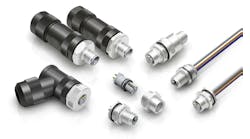Six experts give tips for how to keep cables labeled and easy to identify. As the Industrial Internet of Things (IIoT) continues to gain mindshare and acceptance, the roles of the cables, connectors and wires that move the data become more important.
Any suggestions on maintenance strategies for cable identification by technicians?
Scott Byrne, senior manager, power, instrumentation & controls, at Matrix Technologies, a Control System Integrators Association (CSIA) member: The wire labels should be chosen and applied so that they are readable with nonfading ink, positioned where you can read them without the need to twist the wire. There are infinite ways to name wires and cables. One should consider a standardized code that identifies both ends of the wire or cable, as well as a reference to the wiring schematic. This can be difficult when considering the number of characters a wire label is limited to. But, when done properly, this is highly efficient for troubleshooting purposes. One suggestion would be to name the multi-conductor cable using a from-to scheme and name each individual wire with references to the wiring schematic.
Allen Bennett, field application engineer at Allied Electronics & Automation: Ensure the cable wires are numbered and have the specific wire color on each end. If possible the technician can ring out the cable wires by checking continuity. Most importantly, they need to be labeled.
An example would be to use blue-color Ethernet cable between two controllers; teal-color Ethernet cables for fieldbus/network communication between control devices on a machine; and red-color jacketed cables for safety communication.












